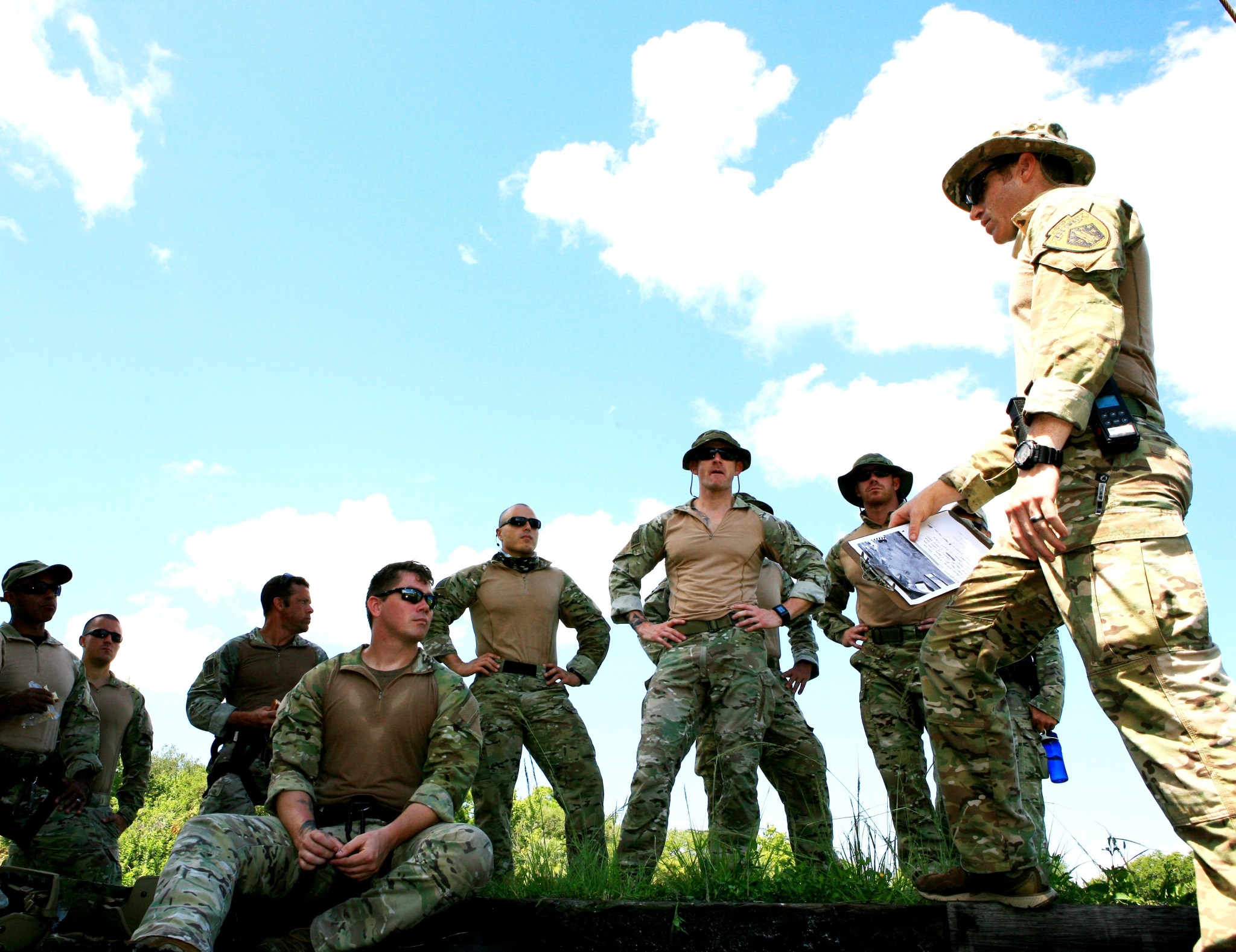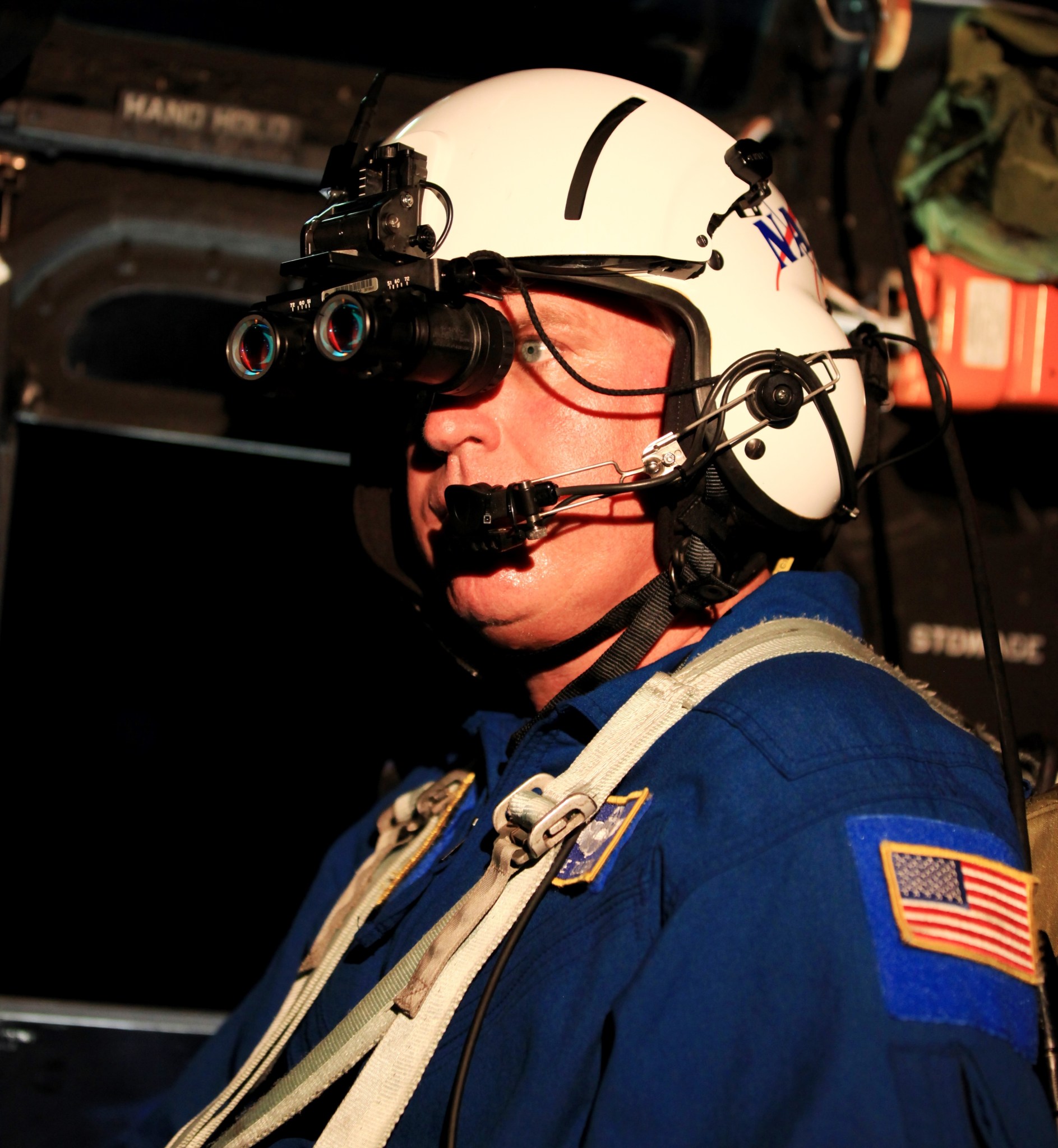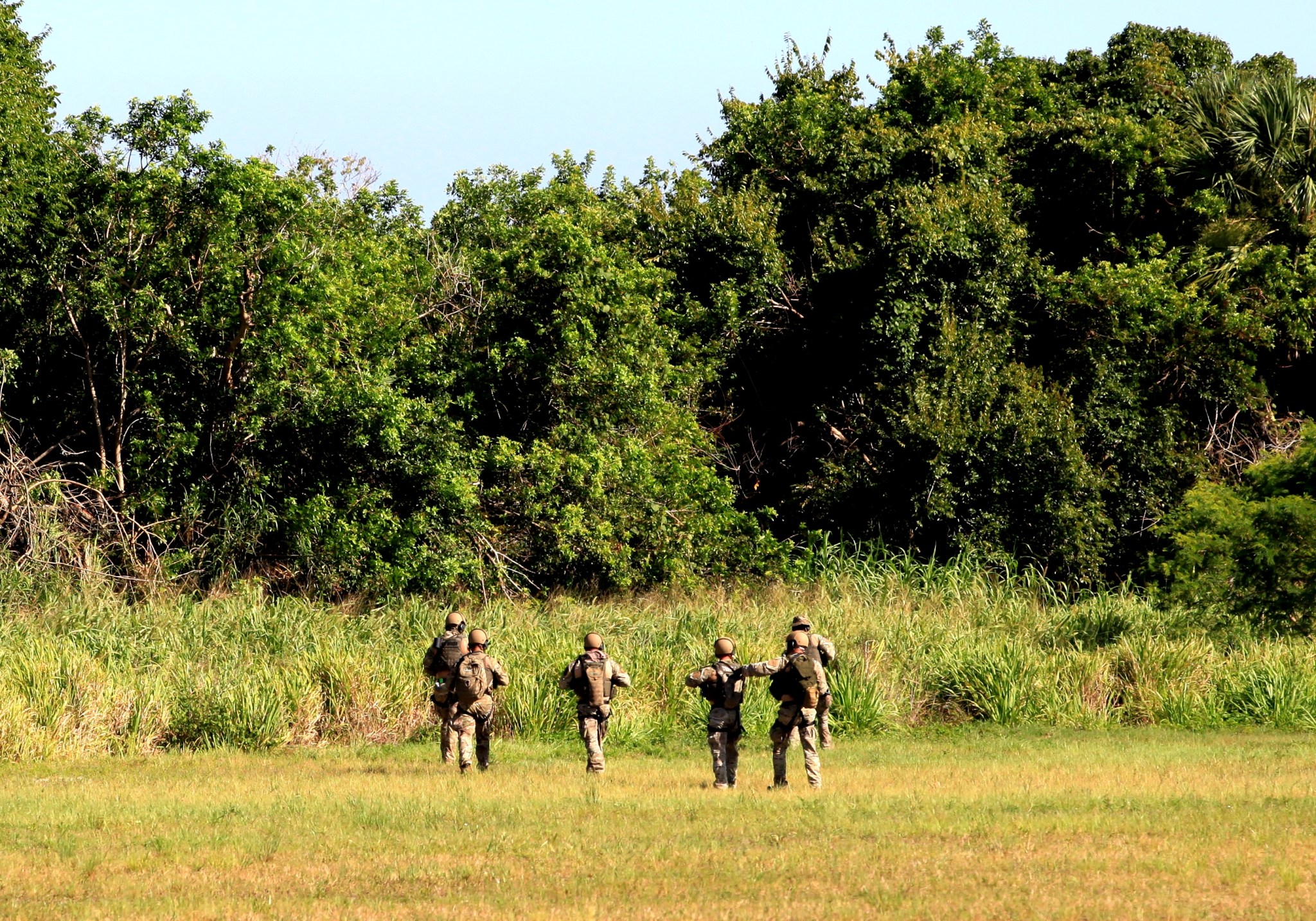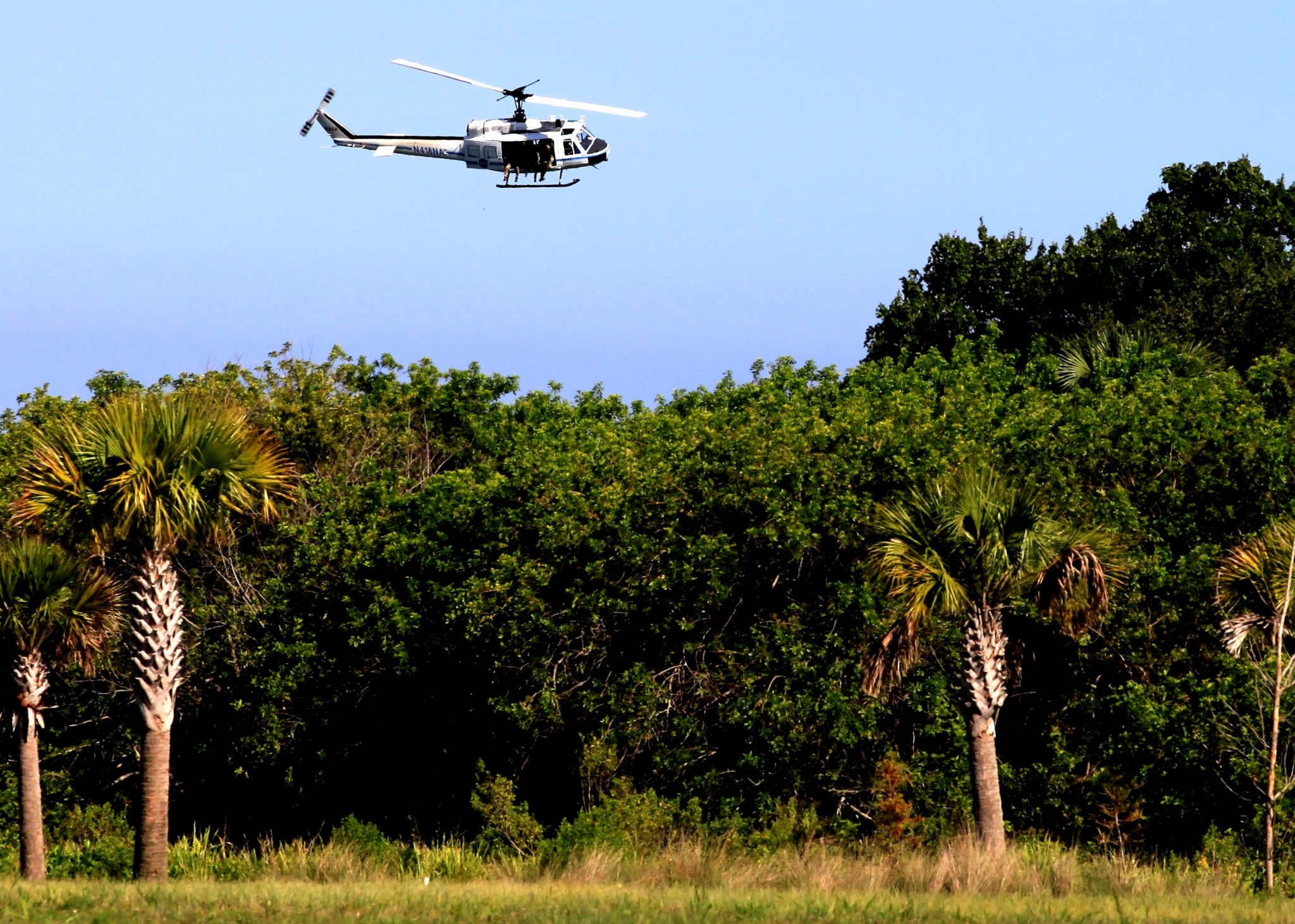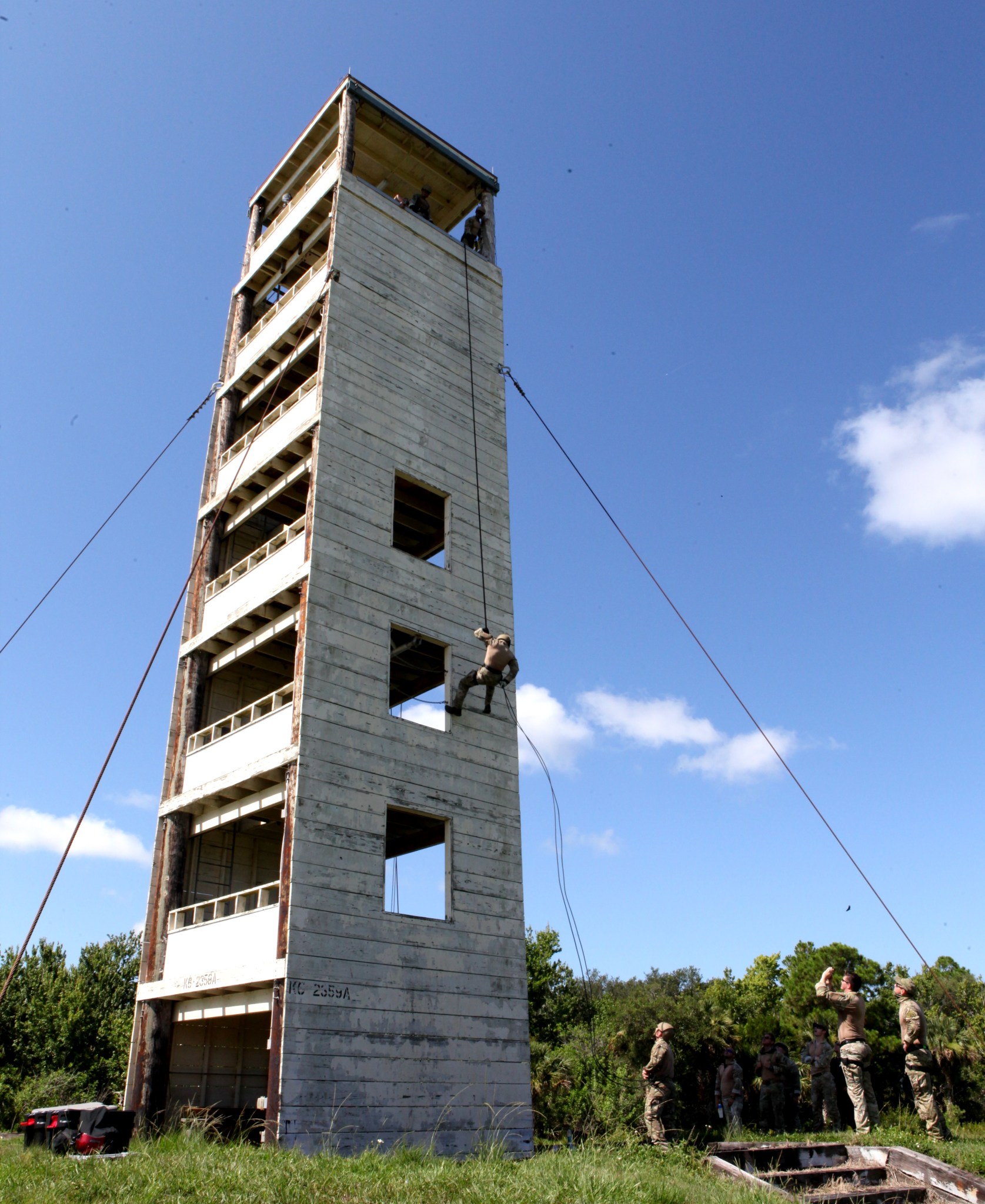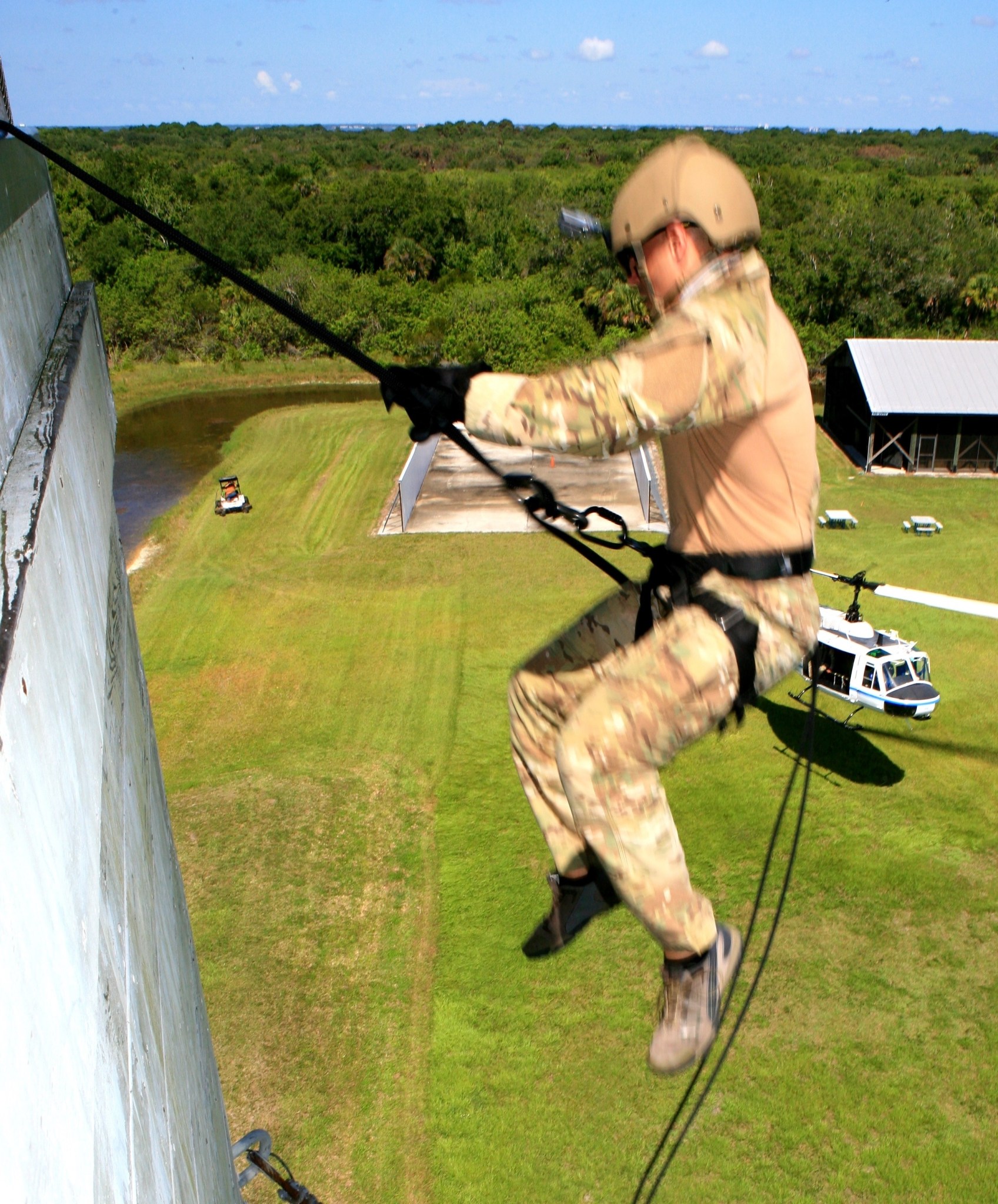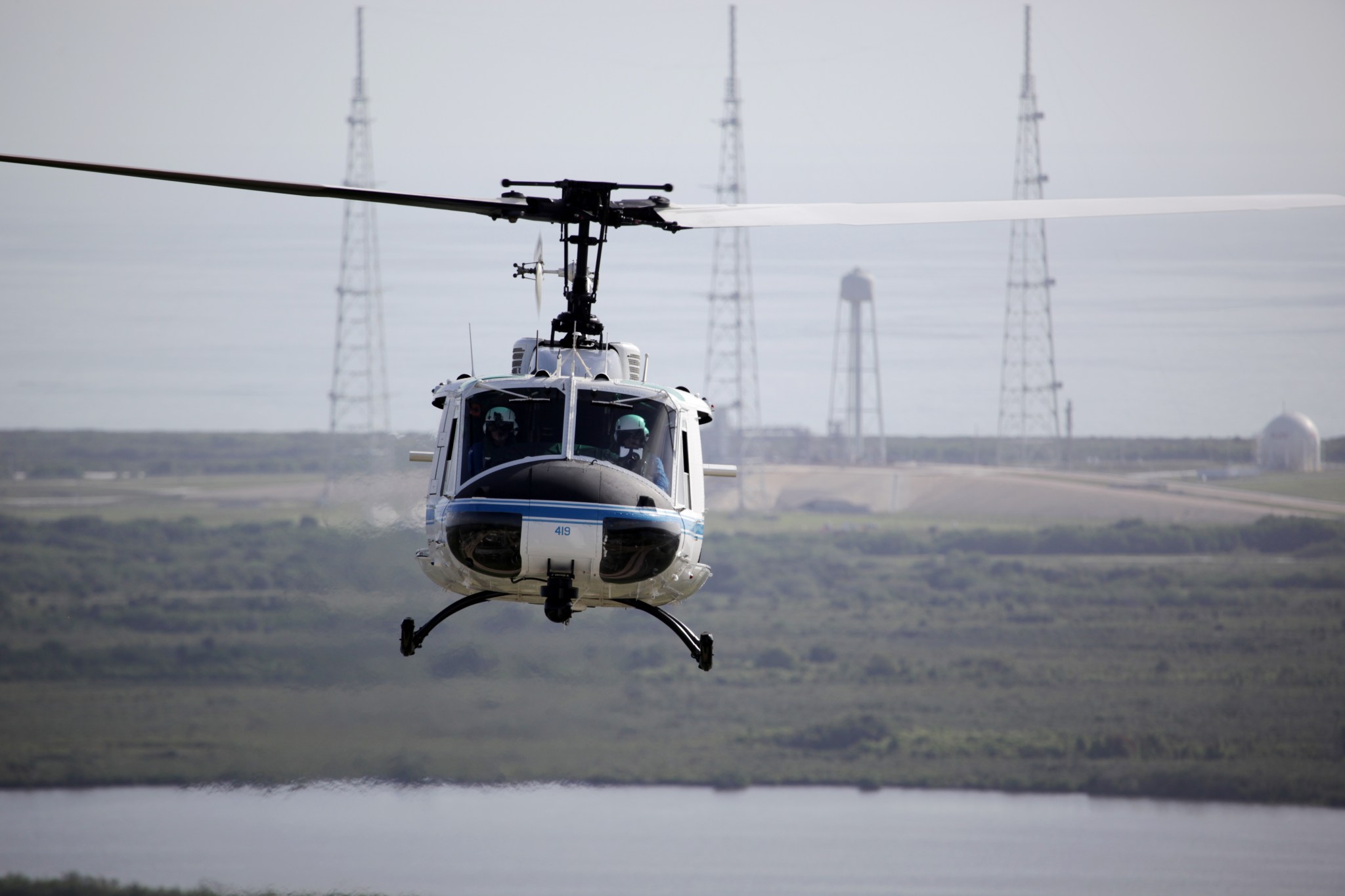By Bob Granath
NASA’s Kennedy Space Center, Florida
Since terrorism is a modern-day fact of life, NASA and contractor experts periodically team up to ensure they are ready to counter any threat to the Kennedy Space Center.
With its role as a 21st century multi-user spaceport for both government and industry, Kennedy could be a potential target. To defend against this possibility, the center’s Aircraft Operations recently teamed with the Kennedy Protective Services Contract (KPSC) Emergency Response Team (ERT) in an extensive, regularly scheduled training exercise. In advancing the agency’s capabilities, the combined groups applied the latest technologies to perfect innovative techniques to defend against risks to people and the center’s crucial facilities.
“This type of training keeps our pilots and our ERT at the top of their game,” said Mike Tillema, chief of NASA Aircraft Operations. “The primary reason we train is to be ready to protect our employees and visitors from threats to the center. Although we hope we never have to conduct this type of operation, the team is ready and able to respond to emergencies or situations at Kennedy.”
Craig Schuh, chief of Security with Chenega Security and Support Solutions, Kennedy’s Protective Services contractor, agrees that protecting people and the spaceport is their goal.
“Anything can happen, considering the significance of the space program,” he said. “Our prime objective is to provide a safe working environment at the center. To do that, we need to be ready for any possibility.”
According to Bill Martin, an Aircraft Operations pilot with URS Federal Technical Services Inc., the terrorist attacks of Sept. 11, 2001, dictated a change in thinking.
“Our nation is not as impenetrable as we used to believe,” he said. “That’s especially true of U.S. government facilities, and our space program is frequently in the world spotlight.”
As a multi-user spaceport, Kennedy is much more diverse with many contractors, different launch vehicles and varied operations supporting human and robotic space exploration and utilization.
Bringing together various security and support units who are on duty around the clock is what the recent ERT exercise was designed to do during the June 15-19, 2015, training.
“The Protective Services team at Kennedy is on duty 24 hours a day, seven days a week,” said Bill Young, ERT commander with Centerra Group. “This can make it challenging to get our entire team together for a comprehensive training effort that includes other groups such as NASA Aircraft Operations. We do this while continuing our roles in security, but the extra work is well worth it.”
Martin emphasized that training between Aircraft Operations and ERT is crucial for planning, coordination and reducing risk.
“You can’t be good if you don’t practice,” he said. “This training exercise gave us an opportunity to work out a lot of logistical details and ensure the No. 1 thing — safety.”
Kennedy’s helicopter operations support multiple missions at the space center. Their flights include everything from quickly transporting injured persons to local hospitals, to firefighting, to assisting environmental experts in keeping track of local wildlife.
The primary support platform used by NASA Aircraft Operations is the well-known UH-1 “Hueys.” The first turbine-powered helicopter to enter production for the U.S. military, they were used extensively during the Vietnam War.
“We can accommodate multiple missions simultaneously,” Martin said. “In supporting Kennedy Security, we can provide more options to reach remote areas and get guys on the ground to counter any threat.”
A high-technology aid recently added to the helicopter pilot and ERT’s tool kit is the latest generation of night vision goggles, or NVGs. An optoelectronic device, NVGs allow aviators and ERT members to see images produced in levels of light approaching total darkness.
“The two main advantages of these night vision goggles are increasing the safety margin and allowing us to fly at lower altitudes at night,” said Tillema. “We now can conduct those operations more effectively and efficiently.”
Night vision devices were first introduced during World War II and used widely during the Vietnam War. Since then, the technology has evolved greatly, improving night vision and increasing performance.
“The goggles amplify starlight, moonlight or any other light available,” said Tillema. “That’s how NVGs work, amplifying the amount of light outside.”
ERT members and NASA Aircraft pilots were assisted in learning to use the NVGs by experts with the U.S. Air Force’s 920th Rescue Wing, based at nearby Patrick Air Force Base, Florida.
“The Air Force gave us the initial training,” Tillema said. “They also taught our team members how to install the NVG, the battery packs and all associated equipment.
“The greatest thing about using goggles at night is the fact that we can effectively search and conduct our operations the same way at night as we do during the day,” he said. “Night vision goggles allow us to fly lower than 500 feet, which operationally and tactically allows us to conduct night security operations that we could not before.”
One of the simulated ERT training scenarios worked by the joint teams involved helicopter crews searching on the ground for an armed intruder breaching the space center’s gates.
“For this exercise, we called in Aircraft Operations to assist with our aerial surveillance and for rapid insertion of our team on the ground,” Young said. “This gives us the opportunity to use technology and tactics together to resolve dangerous situations safer and faster.”
The ERT, also known as SWAT, for Special Weapons And Tactics, is a select group within the Kennedy Patrol team, Schuh explains.
“All Security team members are trained for traffic patrol and staffing the gates,” he said. “This elite group has additional training for emergency response if needed. Their training is, in many ways, similar to the military. In fact, many are former U.S. Army Rangers.”
Today’s Ranger regiment is often referred to as the Army’s premier direct-action raid force. The same is true of Kennedy’s ERT.
An expert in avoiding detection was dispatched to the wooded area near Kennedy’s KARS Park II.
As the helicopter hovered over a clearing near the woods, armed ERT officers used ropes to reach the ground and quickly move into the wooded terrain and track down the intruder.
“After the ERT guys were on the ground, my role was to assist from the search vehicle,” Martin said. “I was looking on the ground, but not hovering in one spot. I moved from side to side to ensure my helicopter and I didn’t become a ‘sitting’ target.”
This is where the latest technology and tactics provide Kennedy’s ERT experts with an advantage. The ERT and Aircraft Operations crew coordinate their maneuvers on the ground and in the air with the latest in communications equipment, and also use infrared and other technology to assist in locating and apprehending hidden or fleeing persons.
While an outside menace is one possibility, Schuh noted that an insider threat also could pose a risk. This was the case at the Johnson Space Center in a few years ago.
On April 20, 2007, an employee of a NASA contractor took two hostages and barricaded himself in an office of the Texas space center’s Communication and Tracking Development Laboratory. Agency security officers, working with the FBI and the Houston police, surrounded the building. The SWAT officers moved in, leading most employees out and directing them to safety. While one hostage was rescued, the employee killed the other hostage and then took his own life.
Young explained that Kennedy Security also works with outside agencies during training exercises such as this to build relationships to ensure they are in place when and if needed.
“We simulated a hostage situation occurring at the center,” he said. “This involved the participation of our ERT and our crisis negotiation team, as well as negotiators and technical experts from the Seminole County Sheriff’s Office. Technology, such as remote cameras and robots, were offered by the Seminole County Sherif’s Office to assist the ERT in resolution of the training scenario.”
The ERT conducted a joint training session with the Brevard County Sheriff’s Office SWAT team earlier this year.
ERT training also included repelling down a seven-story training tower and fast roping from a NASA helicopter.
“We believe that safely training using realistic scenarios improves the team’s proficiency and makes us much more capable when we’re called to respond during a critical situation,” Tillema said.
While descending a rope is nothing new, Kennedy’s ERT approach focused on safety and innovation. Waist harnesses, helmets, gloves and double ropes are designed to reduce risk in what is an inherently hazardous activity.
“These capabilities give us additional options if we need to respond to a situation and quickly reach employees needing help, or to apprehend dangerous intruders at our center,” Young said.
While time was spent ensuring security forces are ready to meet an internal threat, the focus remained on a potential breach from outside.
“The ‘airborne use of force exercises’ utilized mounted and shoulder fired weapons from the helicopters,” said Young. “We send up groups of operators in one or more helicopters to conduct training mission profiles which can be directed and coordinated from a Tactical Operations Center.”
For the exercise, the helicopter rose about 50 feet above the ground and ERT members took turns firing at targets on the ground.
“The gunners train, honing their skills as snipers,” Martin said. “This ensures they can ‘surgically’ engage a specific target or threat.”
Young pointed out that, to date, Kennedy has not had to face a serious threat to the safety or security of its workforce or facilities that, together, comprise a national treasure.
“By conducting these periodic training exercises in which the Kennedy Protective Services team joins together with our partner agencies and available technology,” he said, “we’ll be ready if needed.”

























